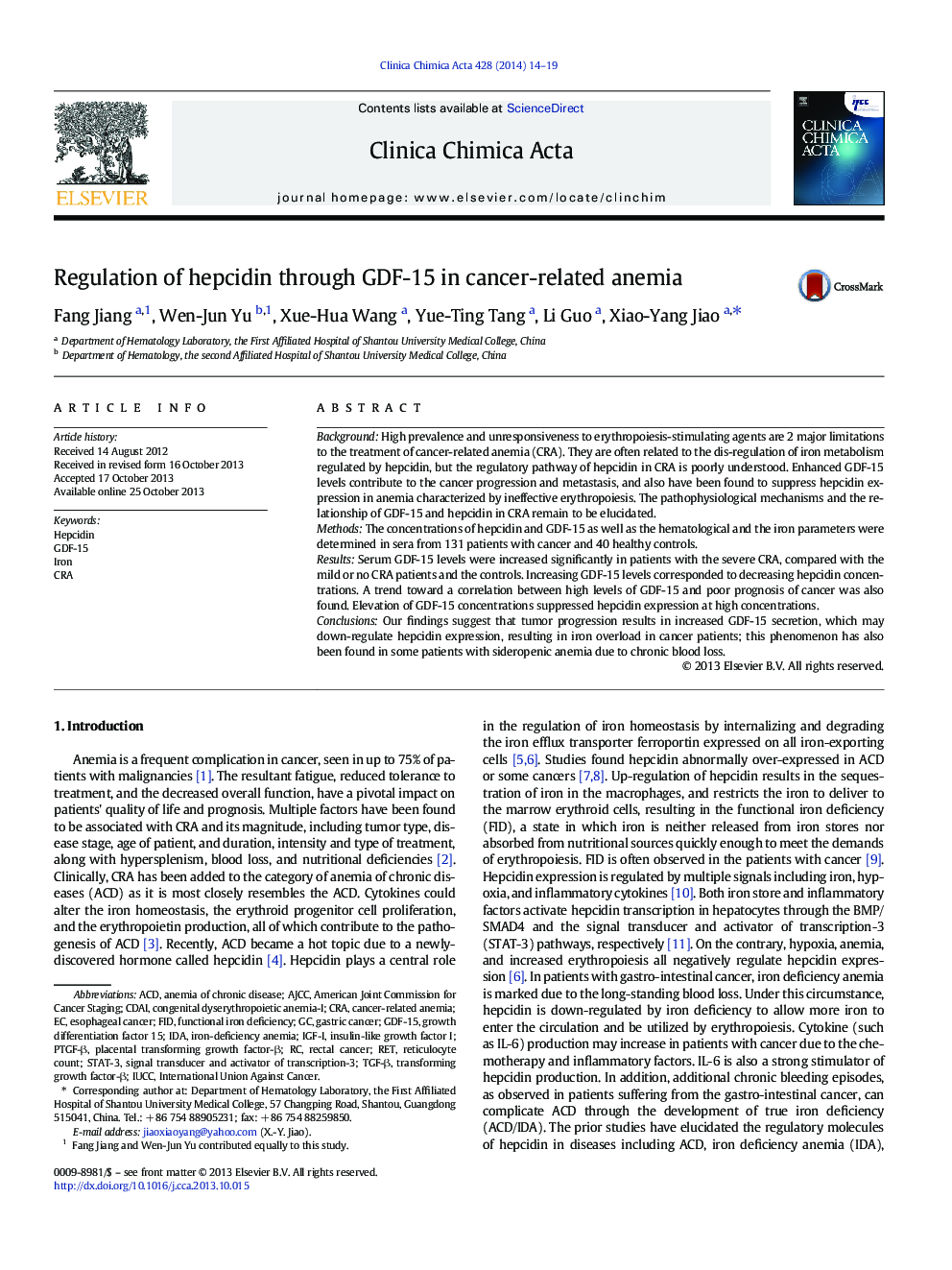| Article ID | Journal | Published Year | Pages | File Type |
|---|---|---|---|---|
| 1965512 | Clinica Chimica Acta | 2014 | 6 Pages |
•We found that antagonistic signals for hepcidin regulation may occur in CRA.•GDF-15 was elevated in response to the anemic state.•GDF-15 did not suppress hepcidin production until GDF-15 levels reached 6000 pg/ml.•Mildly increased GDF-15 concentrations did not suppress hepcidin expression.
BackgroundHigh prevalence and unresponsiveness to erythropoiesis-stimulating agents are 2 major limitations to the treatment of cancer-related anemia (CRA). They are often related to the dis-regulation of iron metabolism regulated by hepcidin, but the regulatory pathway of hepcidin in CRA is poorly understood. Enhanced GDF-15 levels contribute to the cancer progression and metastasis, and also have been found to suppress hepcidin expression in anemia characterized by ineffective erythropoiesis. The pathophysiological mechanisms and the relationship of GDF-15 and hepcidin in CRA remain to be elucidated.MethodsThe concentrations of hepcidin and GDF-15 as well as the hematological and the iron parameters were determined in sera from 131 patients with cancer and 40 healthy controls.ResultsSerum GDF-15 levels were increased significantly in patients with the severe CRA, compared with the mild or no CRA patients and the controls. Increasing GDF-15 levels corresponded to decreasing hepcidin concentrations. A trend toward a correlation between high levels of GDF-15 and poor prognosis of cancer was also found. Elevation of GDF-15 concentrations suppressed hepcidin expression at high concentrations.ConclusionsOur findings suggest that tumor progression results in increased GDF-15 secretion, which may down-regulate hepcidin expression, resulting in iron overload in cancer patients; this phenomenon has also been found in some patients with sideropenic anemia due to chronic blood loss.
